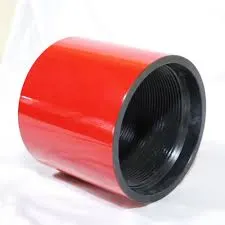- Afrikaans
- Albanian
- Amharic
- Arabic
- Armenian
- Azerbaijani
- Basque
- Belarusian
- Bengali
- Bosnian
- Bulgarian
- Catalan
- Cebuano
- Corsican
- Croatian
- Czech
- Danish
- Dutch
- English
- Esperanto
- Estonian
- Finnish
- French
- Frisian
- Galician
- Georgian
- German
- Greek
- Gujarati
- Haitian Creole
- hausa
- hawaiian
- Hebrew
- Hindi
- Miao
- Hungarian
- Icelandic
- igbo
- Indonesian
- irish
- Italian
- Japanese
- Javanese
- Kannada
- kazakh
- Khmer
- Rwandese
- Korean
- Kurdish
- Kyrgyz
- Lao
- Latin
- Latvian
- Lithuanian
- Luxembourgish
- Macedonian
- Malgashi
- Malay
- Malayalam
- Maltese
- Maori
- Marathi
- Mongolian
- Myanmar
- Nepali
- Norwegian
- Norwegian
- Occitan
- Pashto
- Persian
- Polish
- Portuguese
- Punjabi
- Romanian
- Russian
- Samoan
- Scottish Gaelic
- Serbian
- Sesotho
- Shona
- Sindhi
- Sinhala
- Slovak
- Slovenian
- Somali
- Spanish
- Sundanese
- Swahili
- Swedish
- Tagalog
- Tajik
- Tamil
- Tatar
- Telugu
- Thai
- Turkish
- Turkmen
- Ukrainian
- Urdu
- Uighur
- Uzbek
- Vietnamese
- Welsh
- Bantu
- Yiddish
- Yoruba
- Zulu
Tubing and Casing Solutions for Oil and Gas Industry
Understanding Tubing and Casing in Oil and Gas Operations
In the oil and gas industry, tubing and casing play crucial roles in the extraction of hydrocarbons from subterranean reservoirs. These components are essential for maintaining the integrity of wellbore structures and ensuring the safe and efficient production of oil and gas.
Casing is a series of steel pipes installed in the wellbore after drilling. Its primary purpose is to provide structural support to the well, preventing the walls from collapsing and allowing for safe access to the hydrocarbon reservoirs. Casing helps isolate different geological layers, preventing the migration of fluids between them and ensuring that the well operates safely and effectively. The most commonly used types of casing include surface casing, intermediate casing, and production casing, each serving a distinct purpose throughout the drilling and production process.
- Surface Casing This is the first level of casing installed after drilling a surface hole. It protects the uppermost aquifers and ensures that water resources are not contaminated by drilling fluids or hydrocarbons.
- Intermediate Casing Installed in deeper sections of the well, intermediate casing is crucial for stabilizing the borehole in challenging geological formations. It allows for drilling deeper without encountering issues like blowouts or fluid influx from surrounding rock formations.
tubing and casing

- Production Casing The last casing string, production casing, is set in place to facilitate the flow of oil or gas. This casing must withstand high pressures and corrosive environments, making its quality and installation critical for successful hydrocarbon extraction.
Once the casing is installed, tubing is inserted into the production casing. Tubing is a smaller diameter pipe that allows for the transportation of hydrocarbons from the reservoir to the surface. It is designed for easy removal and replacement, allowing operators to carry out maintenance without needing to pull the entire casing string. The tubing also helps to control the flow of fluids and can be equipped with various completion tools to optimize production.
The relationship between tubing and casing is essential for well performance. While casing provides the structural integrity needed for drilling and production, tubing facilitates the actual extraction process. If the tubing fails, production can be impacted and costly workovers may be necessary. Thus, selecting the correct materials, dimensions, and installation techniques for both tubing and casing is critical to ensure operational success.
Furthermore, advancements in technology have improved the materials used for tubing and casing, enhancing their durability against corrosion and pressure. Techniques such as surface treatments and alloying have led to the development of high-strength, corrosion-resistant options that prolong the lifespan of these components and, consequently, the overall well.
In conclusion, tubing and casing are integral to the successful extraction of oil and gas resources. Their proper selection, installation, and maintenance are vital for ensuring the safety, efficiency, and economic viability of drilling operations. As technology continues to evolve, the oil and gas industry will increasingly rely on innovative approaches to enhance the performance of tubing and casing, ultimately driving the future of energy production.
-
Tubing Pup Joints: Essential Components for Oil and Gas OperationsNewsJul.10,2025
-
Pup Joints: Essential Components for Reliable Drilling OperationsNewsJul.10,2025
-
Pipe Couplings: Connecting Your World EfficientlyNewsJul.10,2025
-
Mastering Oilfield Operations with Quality Tubing and CasingNewsJul.10,2025
-
High-Quality Casing Couplings for Every NeedNewsJul.10,2025
-
Boost Your Drilling Efficiency with Premium Crossover Tools & Seating NipplesNewsJul.10,2025







